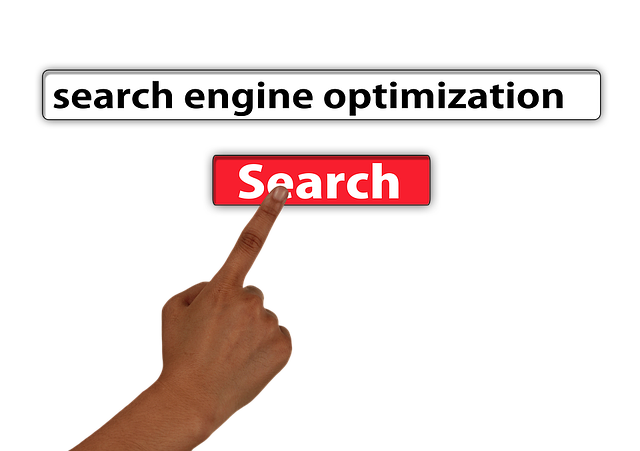The Google HowTo Schema is a powerful tool for content creators, enhancing online visibility by providing structured, step-by-step instructions that search engines can easily understand and display as rich results. By using this schema, websites can create visually appealing guides, attract users seeking practical solutions, and improve click-through rates. Effective implementation includes clear labeling, detailed descriptions, relevant visuals with alt tags, and strategic 'yield' values. Going beyond basic lists, incorporating rich context, and using concise language with relevant keywords optimizes the schema for SEO while enhancing user experience. Validating markup ensures accuracy before publication.
Google’s HowTo schema is a powerful tool for enhancing search visibility of step-by-step content, making it an indispensable strategy for websites aiming to educate and engage users. By leveraging this schema, you can provide search engines with structured data, enabling them to better understand and display your site’s instructional content, including relevant images and context. This article explores the benefits, key elements, visual integration, and best practices of implementing Google HowTo Schema for optimized search results.
- Understanding Google HowTo Schema: The Basic Structure
- Benefits of Implementing HowTo Schema for Search Visibility
- Essential Elements to Include in Your HowTo Markup
- Enhancing Visual Appeal: Integrating Images with Schema
- Adding Context and Instructional Details for Better User Experience
- Best Practices for Optimizing HowTo Schema for Maximum Impact
Understanding Google HowTo Schema: The Basic Structure

Google HowTo Schema is a powerful tool for content creators aiming to enhance their online visibility and provide users with structured, step-by-step instructions. This schema is specifically designed to help search engines understand and display instructional content effectively. By using the HowTo Schema, you create a structured format that includes various elements like steps, ingredients (for recipes), or tasks, each linked to relevant context.
The basic structure involves defining a `HowTo` object with properties such as `name`, `description`, and an array of `step` objects. Each step includes text instructions and can be accompanied by images or videos for better comprehension. This schema allows search engines to present rich results, including step-by-step guides within the search results page, making your content more engaging and useful for users seeking tutorials or how-to information.
Benefits of Implementing HowTo Schema for Search Visibility

Implementing Google’s HowTo Schema is a game-changer for enhancing search visibility and user engagement. By utilizing this powerful markup language, website owners can transform their step-by-step content into visually appealing and informative rich results, making it more likely to capture the attention of potential visitors in a crowded online landscape. When properly structured, HowTo JSON-LD or SEO tagging allows search engines to understand the context and purpose behind instructional content, resulting in better indexing and ranking.
This schema facilitates the display of clear instructions accompanied by relevant images, ensuring that users receive not only textual guidance but also a visual representation of each step. Such rich results encourage higher click-through rates as they offer a more engaging and intuitive user experience. With HowTo SEO Tagging, websites can ensure their content stands out in search results, attracting folks who are actively seeking practical solutions or detailed instructions, thereby increasing the chances of converting these visitors into loyal users.
Essential Elements to Include in Your HowTo Markup

When implementing Google’s HowTo schema markup for enhanced display in search results, several essential elements must be included to ensure its effectiveness. Firstly, each step within your tutorial should have a clear and concise label that describes the action or task. These labels are crucial for both users navigating your content and search engines understanding the structure. Additionally, provide detailed text descriptions for each step, offering context and instructions beyond just the step’s title.
Visual aids significantly enhance the richness of your result, so include relevant images or diagrams that illustrate each step. Ensure these visuals are properly marked up with alt tags to convey their content to users who may have visual impairments. Furthermore, consider adding a ‘yield’ value if applicable, indicating the expected outcome of completing the tutorial. This adds another layer of information for users and can make your rich result stand out even more in search results, compared to purely textual listings.
Enhancing Visual Appeal: Integrating Images with Schema

Integrating images with Google HowTo schema is a powerful strategy to enhance visual appeal and improve click-through rates in search results. When properly marked up, images can provide a more engaging and intuitive user experience by offering a glimpse into the step-by-step tutorial process. This visual integration goes beyond simple aesthetics; it enables users to quickly assess the content’s relevance, making it easier for them to navigate through the instructions.
By incorporating relevant images at strategic points within the HowTo schema, you can create a rich result for your tutorial that stands out in search engine results pages (SERPs). This visual enhancement not only captivates users but also provides contextual clues, making it simpler for search engines like Google to understand and display your content accurately. Effective image usage with Tutorial Schema Markup is a game-changer in HowTo SEO Tagging, ensuring your instructional content is not just found but also readily consumed by interested audiences.
Adding Context and Instructional Details for Better User Experience

When implementing the HowTo schema, it’s crucial to go beyond simply listing steps and incorporate rich context and instructional details. This enhances the user experience by providing a more comprehensive guide that addresses various needs and skill levels. By adding descriptive text around each step, you can offer insights into potential challenges, highlight key points, or suggest alternative approaches.
For instance, if your tutorial involves baking a cake, instead of just stating “Add flour,” you could include details like “Sift the flour to ensure a light and airy texture” or “Use room temperature ingredients for better mixing.” These contextual instructions not only improve search engine optimization (SEO) with rich results for Google HowTo but also guide users through each stage, making your content more engaging and useful.
Best Practices for Optimizing HowTo Schema for Maximum Impact

When implementing Google HowTo Schema, focus on clarity and completeness to ensure maximum impact. Begin by accurately describing each step, using concise language that directly addresses the task at hand. Incorporate relevant keywords naturally throughout your content to enhance search engine comprehension, but avoid keyword stuffing, which can detract from readability.
Visual aids, such as images or diagrams, should be strategically placed within the schema to illustrate key steps and provide context. Use alt tags for images to describe their contents and improve accessibility. Additionally, ensure that your schema is structured logically with a clear beginning, middle, and end, mirroring the progress of an actual tutorial. Validating your markup using Google’s tools can help identify any errors or areas for improvement before publishing.
